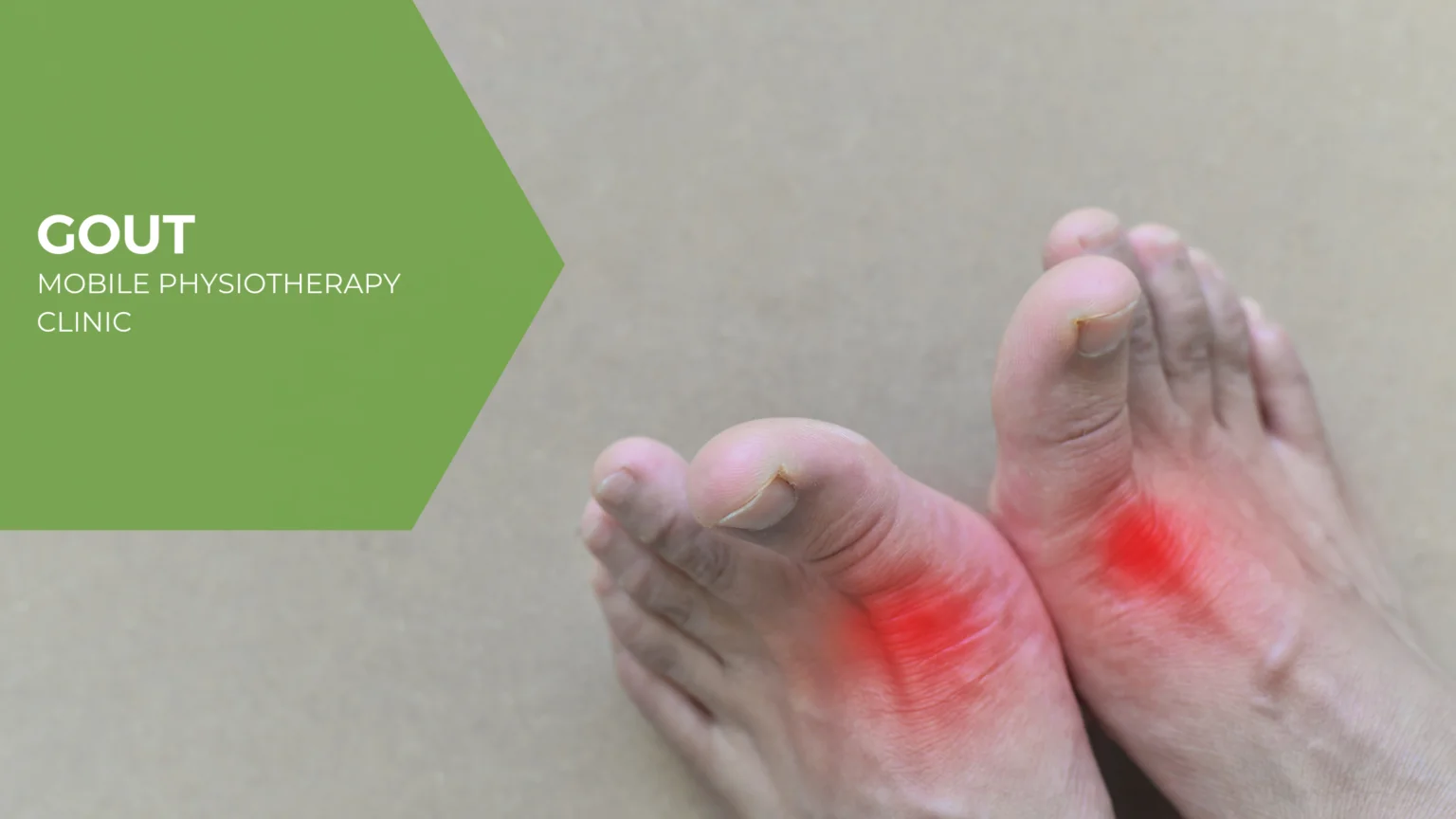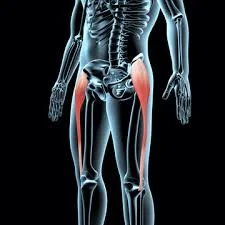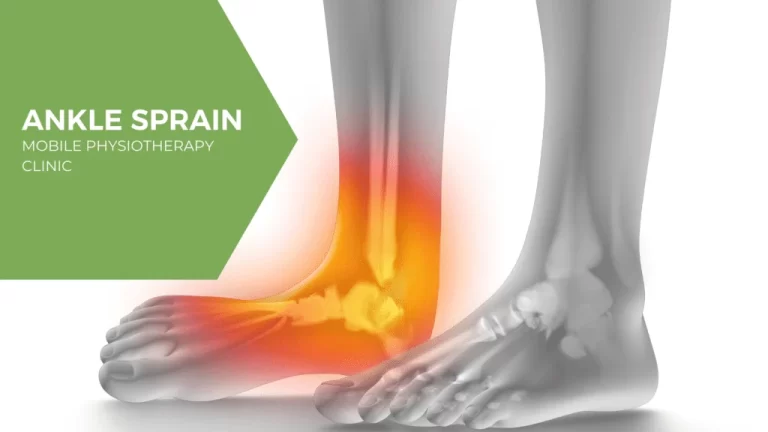Gout
Gout, as described by the doctors, is a very painful form of arthritis caused by crystals that form in and around the joints. It’s the most common type of inflammatory arthritis.It’s more common in men and you’re more likely to get it as you get older.
Gout occurs in people who have high levels of urate in their blood, but having urate in your blood doesn’t mean you’ll develop gout. It’s normal and healthy to have some urate in your bloodstream.
Urate is created every day when our bodies break down purines. Purines are chemicals that are naturally created in our body, but they are also present in certain foods.
People used to think that gout was caused by overeating and drinking too much alcohol. While this can make attacks of gout more likely, it’s not the whole story.
Table of Contents
Symptoms of Gout
Attack
When you have gout, urate crystals can build up in your joints for years without you knowing they are there. When there are a lot of crystals in your joints, some of them can spill out from the cartilage into the space between the two bones in a joint. The tiny, hard, sharp crystals can rub against the soft lining of the joint, called the synovium, causing a lot of pain, swelling and inflammation. When this happens, it’s known as an attack or flare of gout.
During an attack of gout the affected joint becomes:
- very painful
- tender
- red
- hot
- swollen
The skin over the joint often appears shiny and may peel off a little as the attack settles. Attacks usually come on very quickly, often during the night. Doctors describe this sudden development of symptoms as ‘acute’. The attack usually settles after about five to seven days, but it can go on for longer. If gout is left untreated, attacks can become more common and may spread to new joints.
Attacks typically affect the joint at the base of the big toe and often start in the early hours of the morning. The symptoms develop quickly and are at their worst within just 12 to 24 hours of first noticing that anything is wrong. Any light contact with the affected joint is very painful – even the weight of a bedsheet or wearing a sock can be unbearable.
Although gout most often affects the big toe, other joints may also be affected, including:
- other joints in your feet
- ankles
- knees
- elbows
- wrists
- Fingers
It’s possible for several joints to be affected at the same time. It’s not common to have gout in joints towards the centre of your body, such as the spine, shoulders or hips.
Gout attacks are especially common in joints at the ends of your legs and arms, such as in your fingers and toes. This is probably because these parts of the body are cooler, and low temperatures make it more likely for crystals to form. Similar attacks can be caused by a condition called acute calcium pyrophosphate crystal arthritis. This is also known as acute CPP crystal arthritis, which used to be called ‘pseudogout’.
Tophi
Urate crystals can also collect outside of the joints and can be seen under the skin, forming small, firm lumps called tophi. You can sometimes see the white colour of the urate crystals under the skin.
The most common areas for tophi are:
- over the top of the toes
- back of the heel
- front of the knee
- backs of the fingers and wrists
- around the elbow
- the ears
Tophi aren’t usually painful, but they can get in the way of normal daily activities. They can sometimes become inflamed, break down and leak pus-like fluid with gritty white material – these are the urate crystals.
Tophi can also grow within your joints and cause damage to your cartilage and bone. This can lead to more regular, daily pain when you use the affected joints.
Causes of Gout
The human body makes uric acid during the breakdown of chemicals called purines found in certain food and drinks. This normal byproduct goes through the kidneys and exits the body when you pee.
Sometimes the body produces too much uric acid. Or the kidneys can’t do a good job handling it. When the body has high levels of uric acid, or hyperuricemia, uric acid crystals can concentrate in the joints. The sharp, needle-like crystals cause gout. However, many people with higher uric acid levels never get gout.
Risk Factors of Gout
You’re more likely to develop gout if you have high levels of uric acid in your body. Factors that increase the uric acid level in your body include:
- Diet: Eating a diet rich in red meat and shellfish and drinking beverages sweetened with fruit sugar (fructose) increase levels of uric acid, which increase your risk of gout. Alcohol consumption, especially of beer, also increases the risk of gout
- Weight: If you’re overweight, your body produces more uric acid and your kidneys have a more difficult time eliminating uric acid
- Medical conditions: Certain diseases and conditions increase your risk of gout. These include untreated high blood pressure and chronic conditions such as diabetes, obesity, metabolic syndrome, and heart and kidney diseases
- Certain medications: Low-dose aspirin and some medications used to control hypertension — including thiazide diuretics, angiotensin-converting enzyme (ACE) inhibitors and beta blockers — also can increase uric acid levels. So can the use of anti-rejection drugs prescribed for people who have undergone an organ transplant
- Family history of gout: If other members of your family have had gout, you’re more likely to develop the disease
- Age and sex: Gout occurs more often in men, primarily because women tend to have lower uric acid levels. After menopause, however, women’s uric acid levels approach those of men. Men are also more likely to develop gout earlier — usually between the ages of 30 and 50 — whereas women generally develop signs and symptoms after menopause
- Recent surgery or trauma: Experiencing recent surgery or trauma can sometimes trigger a gout attack. In some people, receiving a vaccination can trigger a gout flare
Preventions of Gout
A combination of one or more of these strategies can help prevent uric acid build-up that leads to a gout attack. Doctors and patients are encouraged to talk about which prevention strategies may be the most effective and achievable.
Avoid or limit alcohol
Consuming alcohol inhibits the body’s ability to excrete uric acid, increasing the risk of hyperuricemia and a gout attack. Just one or two glasses of beer, wine, or hard liquor can increase the likelihood of a gout attack, and the risk increases with the number of drinks consumed.
Drink plenty of water
Increasing water intake will help keep the kidneys healthy and help them flush out uric acid from the body. The recommended daily intake of fluids varies depending on an individual’s age, weight, sex, and other factors.
Lose excess weight or maintain a healthy weight
Obtaining and maintaining a healthy weight through diet and exercise helps reduce the risk of gout. Research evidence suggests that sudden, dramatic weight loss, such as after bariatric surgery, may increase the likelihood of a gout attack in the short term. In the long term, excess weight loss—sudden or gradual—is an effective way to reduce risk.
Treat sleep apnea
While more research is needed, some evidence suggests that treating sleep apnea may significantly affect the frequency of gout episodes. Treatment typically includes using a C-Pap machine or another treatment device designed to increase oxygen intake while sleeping. Increased oxygen intake may lower uric acid production and reduce the risk of a gout attack. The primary goals of sleep apnea treatment include improving sleep quality and heart health.
Avoid foods that can trigger a gout flare-up
People who are prone to gout can prevent uric acid buildup in the bloodstream by avoiding certain foods, including seafood, red meats, organ meats, and sugary drinks and foods.
Avoid medications that trigger gout
Certain medications, such as diuretics, are associated with hyperuricemia. People who take these medications and have gout may ask their doctors about other medications or treatments that might be appropriate.
Take prescription gout medication
A doctor may prescribe medication to reduce the amount of uric acid produced by the body. Urate lowering medication is typically recommended to people who:
- Experience more than two gout attacks per year
- Have a gout attack and also have a history of tophi or renal stones (from previous attacks)
- Have a gout attack and also have chronic kidney disease
Commonly prescribed medications include allopurinol and febuxostat. Additional or alternative medications may be prescribed depending on the patient’s circumstances.
Diet for Gout
Consuming certain foods and drinks can raise uric acid levels in the blood and trigger a gout flare-up. Other food may help decrease the likelihood of a gout flare-up. Experts estimate that an appropriate gout prevention diet can reduce uric acid levels up to 15%.
Foods that may trigger a gout attack
Physicians recommend avoiding or limiting consumption of:
- Alcoholic beverages, especially beer
- Sugary foods and beverages, particularly those made with high fructose corn syrup, such as sodas
- Meat, particularly organ meat or “sweetmeats,” such as liver, and game meats6
- Seafood, particularly scallops, anchovies, and herring
Alcohol increases the amount of uric acid in the blood and limits the body’s ability to process and eliminate uric acid.
Foods that may help prevent a gout attack
A gout prevention diet includes plenty of vegetables, fruits, and complex carbohydrates, including whole grains and beans. Such a diet may also include low-fat dairy products and cherries:
- Low-fat dairy products, such as skim milk and yogurt, may decrease the levels of uric acid in the blood and thereby decrease their risk of gout attacks. High-fat dairy products do not have the same protective effect.
- Cherries have long been thought to prevent gout flare-ups, and there is some scientific evidence to support this. Fresh or frozen tart cherries, 100% unsweetened tart cherry juice, or cherry extract may be beneficial. Avoid sweetened cherries, such as cherry pie filling.
Eating a healthy, plant-based diet and taking other preventative steps, such as drinking plenty of water, avoiding alcohol, and maintaining a healthy weight, can go a long way towards preventing gout, other types of arthritis, and heart disease.
Diagnosis of Gout
Doctors usually diagnose gout based on your symptoms and the appearance of the affected joint. Tests to help diagnose gout may include:
- Joint fluid test: Your doctor may use a needle to draw fluid from your affected joint. Urate crystals may be visible when the fluid is examined under a microscope
- Blood test: Your doctor may recommend a blood test to measure the levels of uric acid in your blood. Blood test results can be misleading, though. Some people have high uric acid levels, but never experience gout. And some people have signs and symptoms of gout, but don’t have unusual levels of uric acid in their blood
- X-ray imaging: Joint X-rays can be helpful to rule out other causes of joint inflammation
- Ultrasound: This test uses sound waves to detect urate crystals in joints or in tophi
Dual-energy computerized tomography (DECT): This test combines X-ray images taken from many different angles to visualize urate crystals in joints
Treatment of Gout
Gout medications are available in two types and focus on two different problems. The first type helps reduce the inflammation and pain associated with gout attacks. The second type works to prevent gout complications by lowering the amount of uric acid in your blood.
Which type of medication is right for you depends on the frequency and severity of your symptoms, along with any other health problems you may have.
Medications to treat gout attacks
Drugs used to treat gout flares and prevent future attacks include:
- Nonsteroidal anti-inflammatory drugs (NSAIDs): NSAIDs include over-the-counter options such as ibuprofen (Advil, Motrin IB, others) and naproxen sodium (Aleve), as well as more-powerful prescription NSAIDs such as indomethacin (Indocin, Tivorbex) or celecoxib (Celebrex). NSAIDs carry risks of stomach pain, bleeding and ulcers
- Colchicine: Your doctor may recommend colchicine (Colcrys, Gloperba, Mitigare), an anti-inflammatory drug that effectively reduces gout pain. The drug’s effectiveness may be offset, however, by side effects such as nausea, vomiting and diarrhea
- Corticosteroids: Corticosteroid medications, such as prednisone, may control gout inflammation and pain. Corticosteroids may be in pill form, or they can be injected into your joint. Side effects of corticosteroids may include mood changes, increased blood sugar levels and elevated blood pressure
Medications to prevent gout complications
If you experience several gout attacks each year, or if your gout attacks are less frequent but particularly painful, your doctor may recommend medication to reduce your risk of gout-related complications. If you already have evidence of damage from gout on joint X-rays, or you have tophi, chronic kidney disease or kidney stones, medications to lower your body’s level of uric acid may be recommended.
- Medications that block uric acid production: Drugs such as allopurinol (Aloprim, Lopurin, Zyloprim) and febuxostat (Uloric) help limit the amount of uric acid your body makes. Side effects of allopurinol include fever, rash, hepatitis and kidney problems. Febuxostat side effects include rash, nausea and reduced liver function. Febuxostat also may increase the risk of heart-related death
- Medications that improve uric acid removal: Drugs such as probenecid (Probalan) help improve your kidneys’ ability to remove uric acid from your body. Side effects include a rash, stomach pain and kidney stones
Lifestyle and home remedies
Medications are often the most effective way to treat gout attacks and prevent recurrent symptom flares. However, lifestyle choices also are important, and you may want to:
- Choose healthier beverages: Limit alcoholic beverages and drinks sweetened with fruit sugar (fructose). Instead, drink plenty of nonalcoholic beverages, especially water
- Avoid foods high in purines: Red meat and organ meats, such as liver, are especially high in purines. Purine-rich seafood includes anchovies, sardines, mussels, scallops, trout and tuna. Low-fat dairy products may be a better source of protein for people prone to gout
Exercise regularly and lose weight: Keeping your body at a healthy weight reduces your risk of gout. Choose low-impact activities such as walking, bicycling and swimming — which are easier on your joints
Exercises for Wrist Sprain
Check in with your doctor before starting an exercise program. The U.S. Department of Health and Human Services recommends adults do 150 minutes or more of moderate-intensity physical activity, such as brisk walking, per week. An ideal exercise routine includes three components:
- Aerobic exercise: These activities increase your heart rate and boost endurance. Aim to include some type of aerobic exercise in your program three to four times per week for about 30 minutes at a time. You could try walking or using a stationary bicycle. Or consider taking a dip. Swimming and exercising in warm water may feel good on stiff joints. You may find it’s easier to move your joints in the water than on land. Plus, the water supports your body and reduces wear and tear on your joints
- Flexibility exercise: These exercises help improve your range of motion. Increasing your flexibility will make other types of exercise easier and will help you move around more comfortably during your day. Try carving out 15 minutes to stretch every day. Move slowly and smoothly when you stretch
- Strengthening exercise: If you’ve been inactive because of painful and swollen joints, your muscles may be weak. Lifting weights and doing resistance exercises will help increase your strength. Stronger muscles support your joints and prevent injury. Go slow to prevent injury, and intensify your workout as you gain strength. As you get stronger, everyday activities such as climbing stairs and lifting heavy objects will become easier to do
There are many different ways to build strength. For example, you could use free weights, elastic bands, or weight machines, or do exercises in a pool. Always stretch before doing any kind of strength training exercise. Remember to start slow: Begin with very light weights and gradually add more as you become stronger.







